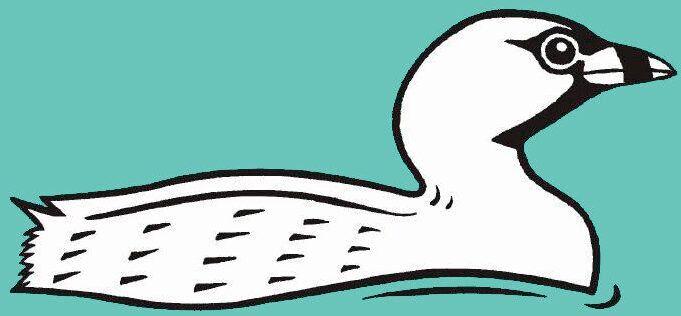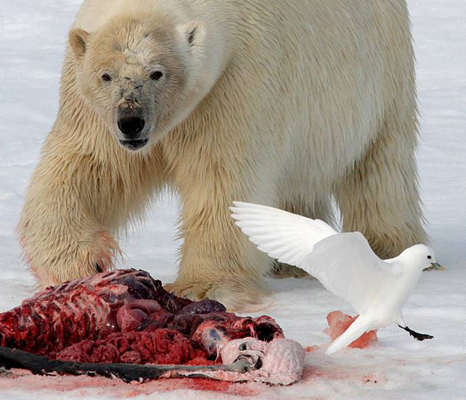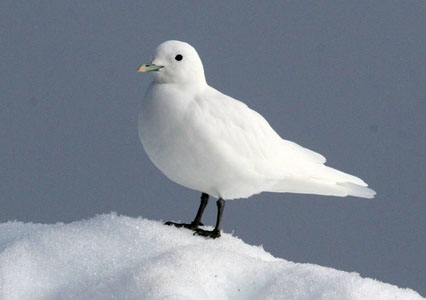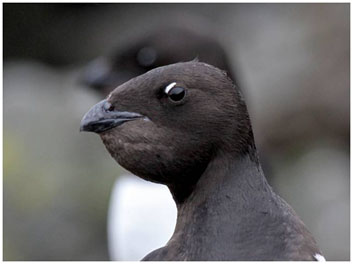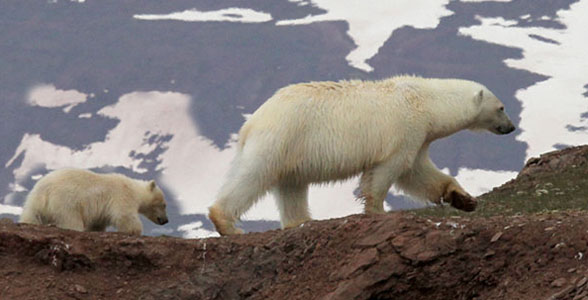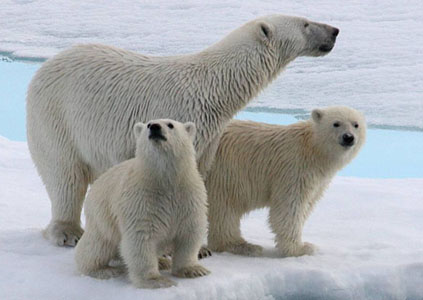The Summer’s sea ice is retreating year by year in the Arctic and causing concern about the long-term prospects of Polar Bears. In 2012 it was at an all time minimum. At the current rate of contraction, some predict an ice-free Arctic Summer in 25 years time. In July and early August 2012, I was in Svalbard and witnessed the melting pack and how the bears cope.
A Polar Bear in its element. The world’s largest terrestrial predator needs to kill and consume blubber-wrapped seals to survive and thrive, and it is adapted to do this on the frozen sea. The Barents Sea population is estimated to be around 3000.
Ivory Gulls, high Arctic specialists, are partly dependent upon Polar Bears by scavenging off their kills. There are approximately 1000 pairs nesting in Svalbard. Global warming will affect both this and other high Arctic species like Little Auks.
Little Auks return to their rookeries with throat pouches crammed full of copepods – not any old copepods. These birds feed on cold water species which are full of calorie-rich fats. As the Arctic waters warm, less nourishing Atlantic species move north and displace them, thus jeopardising the ability of the Little Auks to provide proper nourishment for their chicks.
Polar Bear cubs stay with their mothers for two summers and during their first season together, the female must be able to consume enough food for them both to endure the winter well nourished with plenty of body fat. If marooned on the land by retreating ice,, she may only be able to survive on carrion, eggs and young birds – small fare for a bear. She may survive the winter but possibly not her offspring. Hunting on the frozen sea offers much better prospects for polar bear families.
Although the Svalbard population appears to be stable, the Polar Bears in the Bering Sea between Siberia and Alaska are not doing as well. There is evidence that the survival rate of cubs into their second year when they are still dependent upon their mothers has declined. This supports the view that the quality of the hunting is not what it used to be in this part of the Arctic where the summer sea ice has been retreating the most.
JOHN SPARKS
